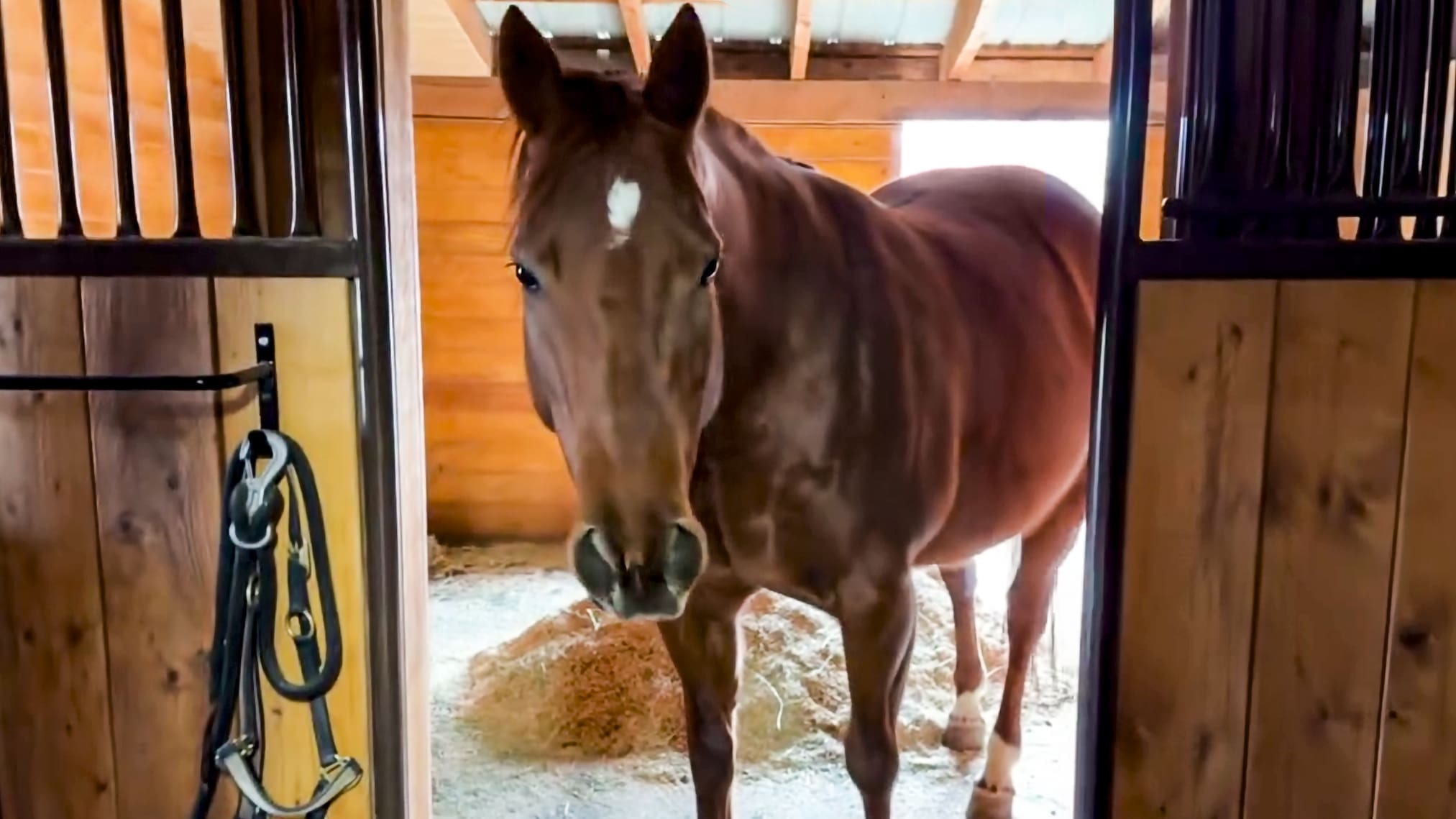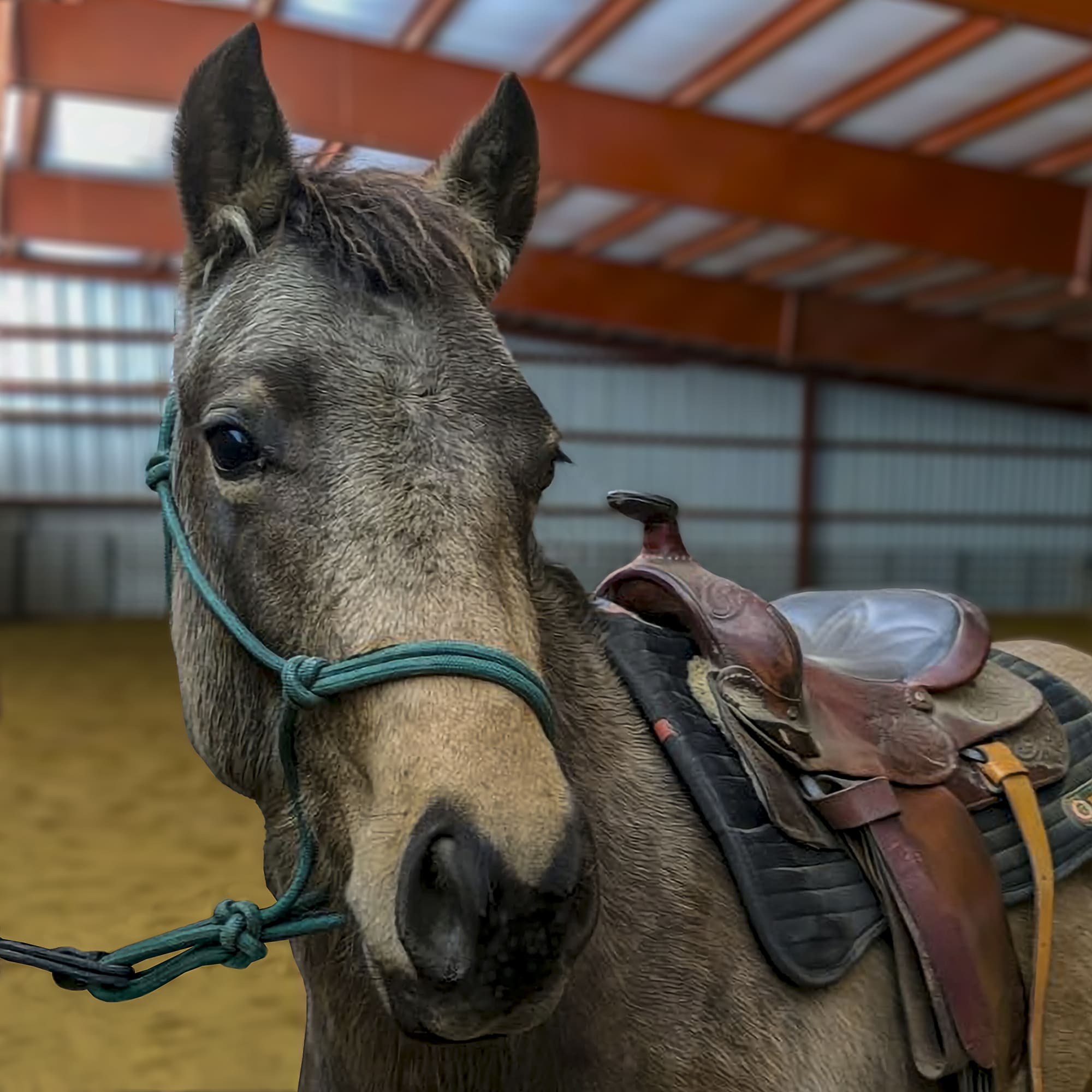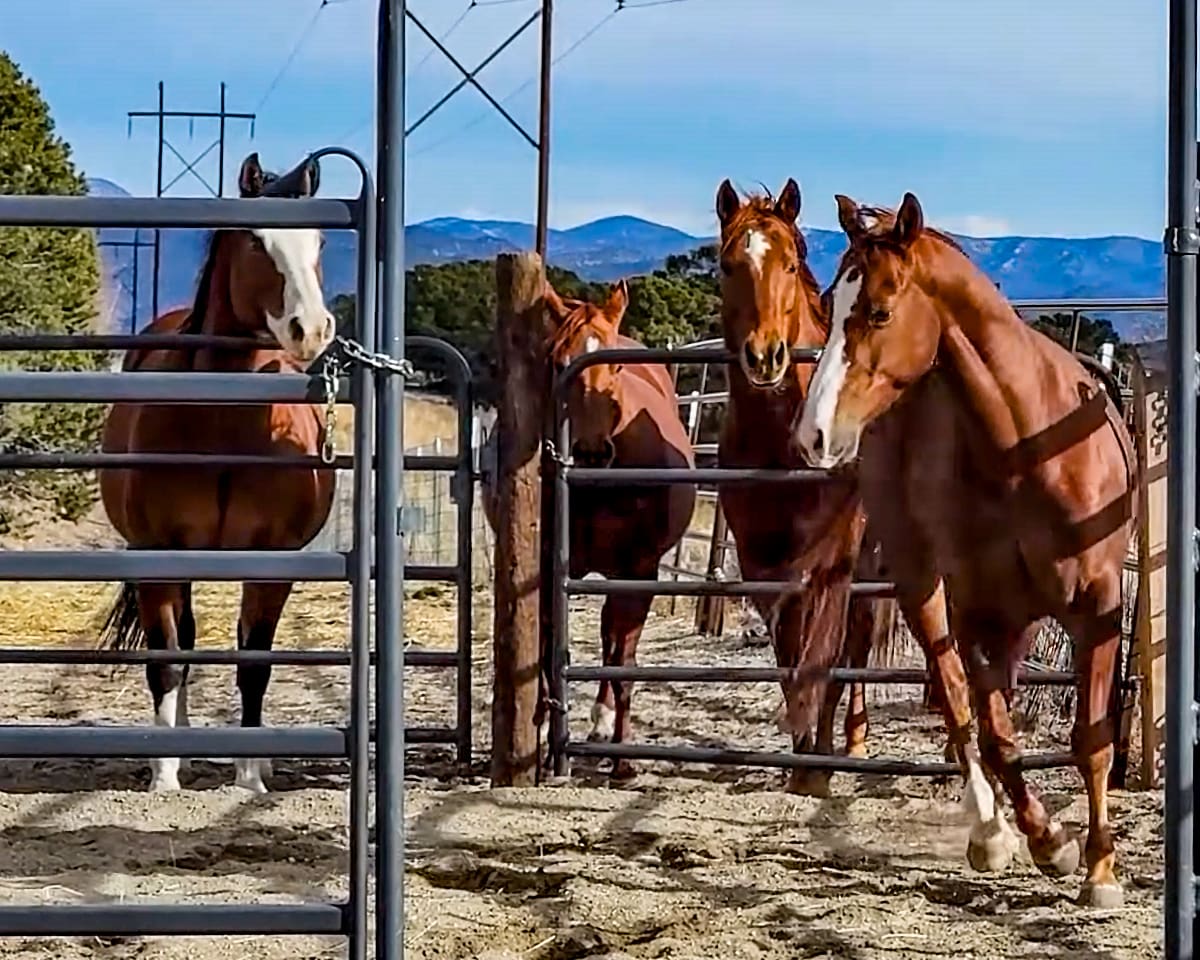Question Category: Talk about Tack
Question: Dear Julie,
My question to you is what is your opinion of Myler bits? I came across a book recently that talked about the Myler comfort snaffle. I was surprised to learn that not all snaffles are exactly what they are supposed to be. The reason I’m asking is my horse Montana is in a D-ring snaffle. I have noticed at times him pulling the reins and opening his mouth. Even when I put him in the round pen with saddle and head stall on he does the same thing and I’m not even on him. It seems to me that it’s bothering him more and more. From what I read, snaffles can keep a horse from swallowing because of the pressure on the tongue. I keep checking my hands to make sure they are not harsh. I even notice it when his head is down and he’s relaxed like Western pleasure…he still opens and gaps his mouth, pulls the reins and goes sideways. I have been working on changing some of his habits from before I had him. Who ever had him before used to put lots of pressure on his mouth so he’d rout out. He’s come a long way from doing that; I just want to make sure I haven’t missed something or over looked anything. There are so many bits on the market how does one decide which is best? If you have any ideas I’d appreciate it. Thanks so much
Lisa
Answer: Hi Lisa,
There is a lot of confusion about bits and many misconceptions. Many people do not really understand the difference between the two main types of bits, snaffles and curbs (or direct pressure and leverage bits) and many people think a snaffle is automatically mild and a curb is automatically harsh. In reality, nothing can be further from the truth-there are many incredibly harsh snaffles out there and there are many very mild curbs. And the joint in the middle of the bit is not what makes it a snaffle, so a bit with shanks and a jointed mouth piece is not a snaffle-if it has shanks and the reins do not attach directly opposite the mouthpiece, it is not a snaffle (see the Q&A on my website about Tom Thumb bits).
There are other common misconceptions about bits. First, it is not important whether or not the bit is mild or harsh; what’s important is the way the rider uses her hands. The mildest bit in the wrong hands can be harsh and the harshest bit in the right hands can be mild. Also, changing bits will not fix a training problem with a horse. In other words, if you have a horse that is going too fast for instance, putting a stronger bit in his mouth will not fix the problem; only more training will fix it. Going to a harsher bit will often make a training problem worse because it causes more anxiety for the horse and usually exacerbates the problem, especially in the case of the fast horse since horses have a tendency to speed up when they become more anxious. As for your question on Myler bits, I love them and have a tack room full of them-both snaffle and curb. It’s pretty much all I use. I like them because they are manufactured with the highest quality materials and craftsmanship, they are ergonomically designed to fit a horse’s mouth comfortably and they are also designed for specific effectiveness. There are a huge range of bits available through Myler and each one is rated for the horse’s level of training, so that your horse can move seamlessly from one bit to another as his training level increases and his needs change. You’re right when you say that there are so many bits on the market that it is sometimes hard for people to make sense of them. Myler has worked hard to educate horse owners about what makes a bit mild or harsh and how it works in the horse’s mouth. So that even a person that knows little or nothing about bits can read the pamphlet that comes with the bit, view the video on bits and look at the rating of the bit to make an informed decision about what bit is best for their horse.
My favorite Myler bits are the comfort snaffle and the jointed curb bits. The snaffles have a curved mouthpiece, so that the bit is actually the shape of the horse’s mouth, giving him tongue and palate relief and making the bit more effective working off the corners of the mouth with the lightest possible pressure. The mouthpiece is made with sweet iron with copper inlays, giving the horse a sweet and saliva-producing taste in his mouth. I like the bit with the copper roller in the middle and this is my bit of choice for the snaffle horses. I have about every level of curb bit too, for the Western horses that need to work in a curb and they are made with the same high quality materials and an effective shape and function.
For your horse, it sounds like changing bits might be helpful. If the horse is fighting the bit without a rider, I would be highly suspicious. Have you checked his tongue for scarring? Have his teeth been checked and have his wolf teeth been removed? Have you tried riding him in a bosal, side pull or rope halter to see if that alleviates the problem? This might help determine how much of the issue is bit fit, how much has to do with the rider’s hands and how much of it is a training issue. If there is a physical problem, obviously that will have to be addressed before you decide on the best bit or bridle for your horse. It is possible that your horse has never been properly bitted out and he does not know the correct way to respond to pressure on the bit. A surprisingly high number of horses were never really trained properly, they just had a bit stuck in their mouth one day and forceful pressure made the horse respond. A horse must be systematically trained what to do when he feels pressure on the bit and how to give both laterally and longitudinally (vertically) when he feels pressure. Or, he may have had his mouth anti-trained from poor riding, learning to be defensive about his mouth and/or to ignore light pressure because he never got a release.
After ruling out a physical problem, I would spend some time with him in the round pen with an elbow- pull biting rig (see the Q&A section on my website) and see if the horse can learn to give longitudinally to the bit and be soft in the mouth and jaw. Then we would do some lateral flexes until the horse gives to the side, and then start over from the saddle teaching him to give to light pressure both vertically and laterally and find the release.
Many, if not most bitting problems originate with the rider’s hands-maybe yours or maybe the hands that came before you. No horse wants pressure on his mouth, so he will always look for an escape from the pressure. If doing the right things (dropping his head and giving to the pressure) doesn’t get the release he is looking for, he begins to try other things, like throwing his head or inverting or rooting the reins, until he finds something that does get him a release. If he inadvertently gets a release when he is doing the wrong thing, the wrong thing becomes a learned response.
Without seeing you in action, I can’t really guess whether or not your riding is causing a problem for the horse but it seems like from your description, he is not happy with the bit you are currently using. Certainly putting him in a snaffle that has a more comfortable fit would be a good place to start. Assessing whether or not there are any physical issues preventing him from accepting the bit and better training to teach him the proper response to pressure on the bit are necessary steps as well. Good luck!
JG Dale Myler’s online videos: http://www.juliegoodnight.com/mylervideos.html
This FREE online video series accompanies Dale Myler’s appearances on Horse Master with Julie Goodnight. Dale describes the Myler bitting philosophy and details how bits function in the horses’ mouths.
Copyright ©Julie Goodnight 2000. All Rights Reserved. No part of this website may be reproduced without owner’s express consent.




No comment yet, add your voice below!